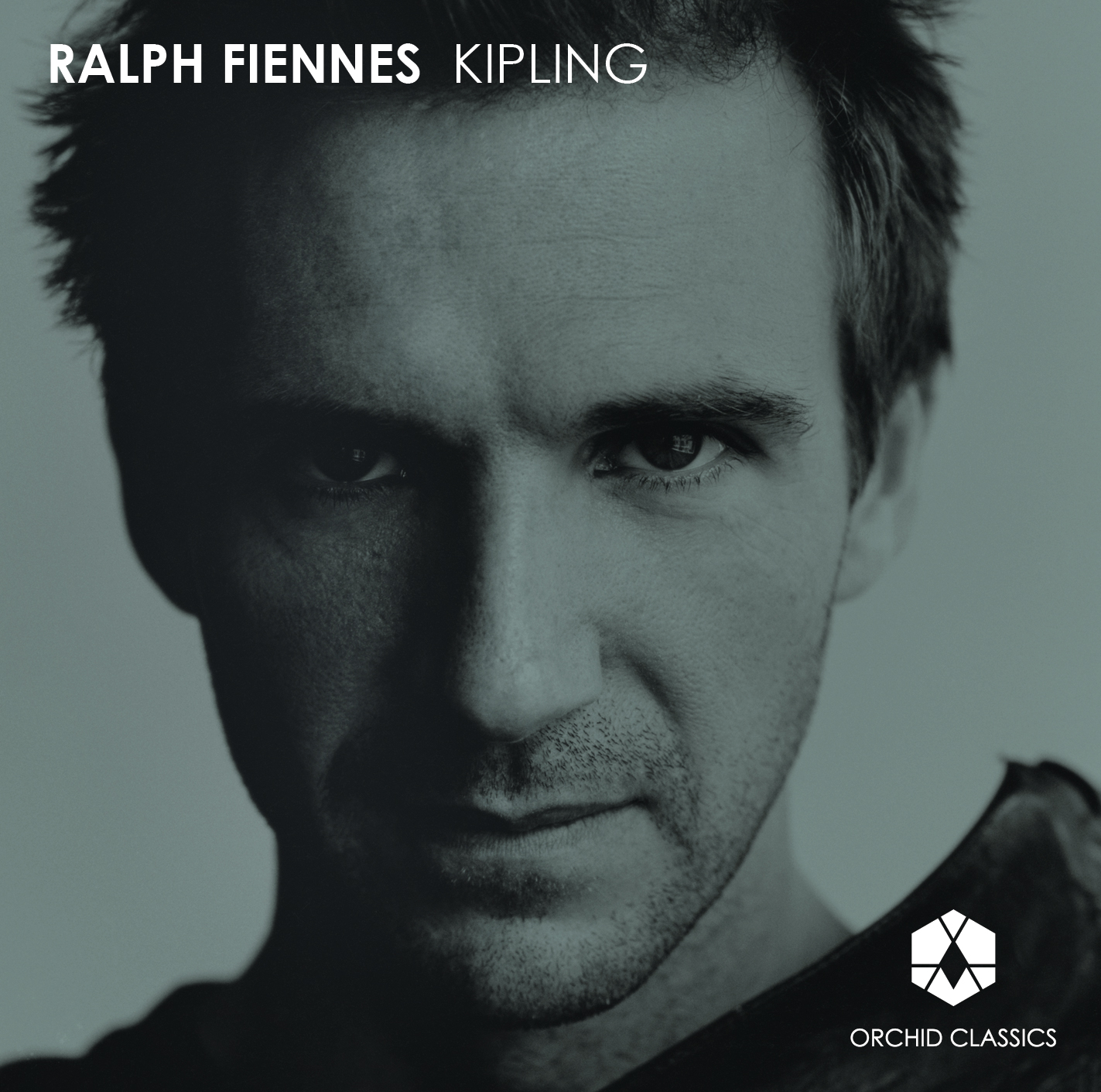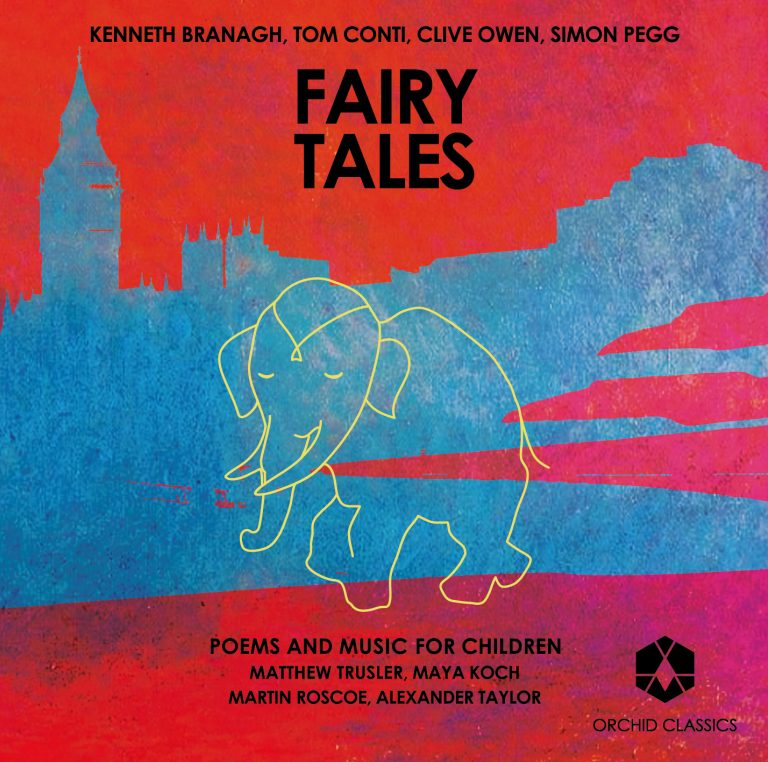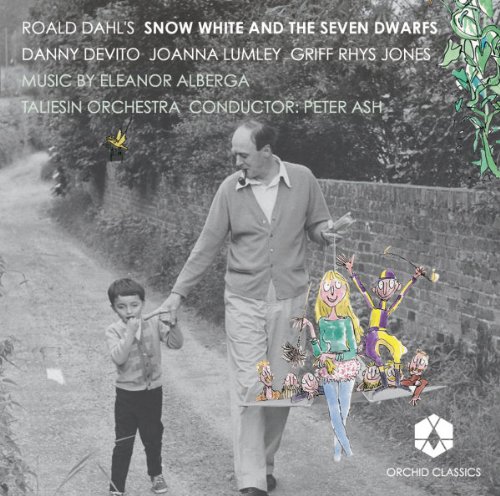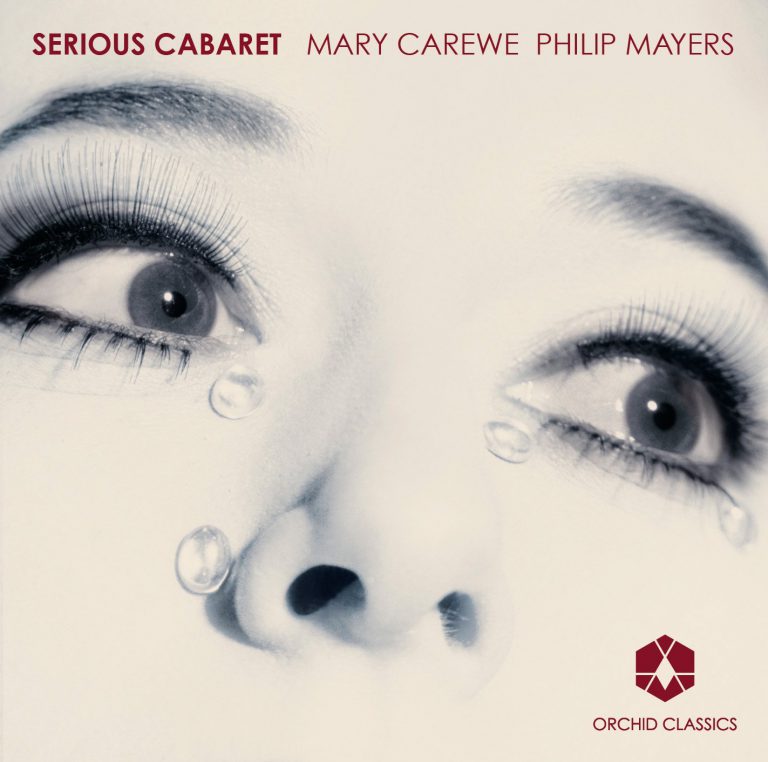Artist Led, Creatively Driven

Ralph Fiennes reads
Rudyard Kipling
Release Date: November 2010
ORC100014
Music: Sitar
A Very Young Person from Something of Myself
Music: Variation 1. Enigma Variations (Edward Elgar)
How the Whale got his Throat Just So Stories
Music: La Capricieuse (Edward Elgar)
Rikki-Tikki-Tavi from The Jungle Book
Music: Flute and drone
Seven Years Hard from Something of Myself
Danny Deever
Kim
Solo flute
If…
The Very-Own House from Something of Myself
The Way Through the Woods
Music: Chanson de Matin (Edward Elgar)
Mine Sweepers
Letter to Brigadier L.C. Dunsterville
My Boy Jack
Music: Nimrod. Enigma Variations (Edward Elgar)
Cities and Thrones and Powers
RALPH FIENNES, reader
Ruggiero Ricci, violin / Ernest Lush, piano (track 5)
London Philharmonic Orchestra / Sir Adrian Boult
RUDYARD KIPLING (1865-1936)
Rudyard Kipling was a highly accomplished writer of both prose and verse, and also one of some complexity. He was born in Bombay, where his father taught in the School of Art. At the age of five he and his sister, then three, were taken to England and left by his parents with a relative in Southsea. There he was most unhappy, as he tells in the first chapter of his autobiography, Something of Myself and also indirectly in various stories. This drove him back on his own resources, later voracious reading. His schooling at the United Services College at Westward Ho! was also severe; but the headmaster, Cormell Price, had been a friend of his father’s and the Pre-Raphaelites in their youthful days. Kipling was a small but sturdy boy, the only one in the school to wear glasses, hence his nickname Gigger (derived from Gig-lamps). Price recognised the boy’s literary gifts, and gave him later the run of his library. Kipling was inordinately proud of his school, the vast majority of whose pupils went into the army. At the age of sixteen years and ten months, he returned to Lahore via Bombay and worked for the local newspaper in Lahore, where his father was now Principal of the Art School and Curator of the Museum. In those seven years of journalism Kipling developed his astonishing talents, particularly when he was encouraged to write stories. Like Hemingway he learned his craft through journalism, and always enjoyed the company of newspaper men. He also wrote verse and gained quite a reputation in India. On going ‘home’ to England – India was always his home at the deepest level – in 1889 he enjoyed a success more spectacular even than those of the youthful Byron and Dickens. He impressed Henry James as an undoubted genius, and his fame spread to Europe and America. He was the first Englishman to receive a Nobel Prize for Literature, in 1907.
The four centres of his life were to be India (remembered but only once revisited briefly), the United States where he hoped at one time to live permanently, then South Africa, and finally Sussex, where he lived for the last 39 years of his life, 34 of them in a fine Jacobean house built by a local ironmaster. Kipling made every attempt to see himself as a Sussex man, and to root himself in its traditional life. He certainly became the unofficial poet laureate of those years, but the times had changed for Kipling, ever since his regular visits to South Africa, especially after his fervent support of the army in the Boer War. Thereafter, though he was still widely read, his popularity had faded. But the writings of subsequent years, though increasingly more difficult, are now generally rated as among his very best.
This programme begins with his account of the Southsea years. It is followed by one of the Just So Stories, narrated for his children, and then by ‘Rikki Tikki Tavi’ from The Jungle Book. ‘Seven Years Hard’ tells of the years in Lahore and Allahabad in which Kipling learned not only the discipline of his craft but the capacity to use every minute and to know all about the life of the working world around him, the ‘shop’ of varied vocations, and the loyalty of those serving in India to their comrades. He also wrote the Barrack Room Ballads from his knowledge of rank and file soldiers; ‘Danny Deever’ is one of his finest poems which records a grim but not uncommon incident in the stifling barrack rooms.
The greatest of Kipling’s prose fictions is Kim, from which we have taken a passage about the pilgrimage of the Lama and his young disciple. They are walking down a section of the Grand Trunk road from Allahabad to Benares, which Kim sees as a ‘broad, smiling river’ of life, and Kipling shows how much of the real India could be seen on it. The detail, checked by his father, is accurate, and like so much in Kipling’s books it owes much to his father’s minute knowledge of the country.
‘If…’, the most popular of the poems, shows the skill with which he could present an argument with dexterity. He was no less skilled in his poetry than his prose, both of which are beneficial to each other.
‘The Very-Own House’ from his autobiography shows Kipling’s delight in the Sussex countrymen and the respect they had for good craftsmanship. He was very quick to learn about them, their ways and even their dialect. He did indeed in one sense become naturalised, just as he could assimilate every kind of jargon or dialect. The retentiveness of his memory was enhanced by the journalistic training. (Jane Cakebread, mentioned in this extract, was a Soho character with over 90 convictions, mostly for being drunk and disorderly – hence the similarity to the misbehaving Lanchester.)
The great sorrow of the Kiplings had been the loss of two beloved children, Josephine who died in 1899, and John, killed in 1915 at the Battle of Loos. Kipling had managed to get him a commission in the Irish Guards where after a year’s training he was reported missing, probably killed, at the age of one month over eighteen. The poem ‘My Boy Jack’ is almost unbearable to read in the circumstances.
The death of John broke the ‘family square’ which had always been so important to Kipling.
The poem ‘Mine Sweepers’ celebrates another aspect of the War which otherwise more and more oppressed him with a growing sense that his generation had betrayed their sons in refusing to see how ruinous to civilisation as a whole that sacrifice had been.
If Kipling in later life was seen as an embittered reactionary, with rooted prejudices, the artist in him was more powerful than the public campaigner. He is always likely to surprise when his true feelings arise. Thus, as early as Kim, it is remarkable that one of the characters he admires should have been a Bengali, a people habitually distrusted by him, who serves in the ‘Great Game’ (secret intelligence work), bravely; and that he allowed the Lama to consent to his disciple returning to the same pursuit. It is significant that Kipling himself has a profound respect for the Lama’s mystical vision. This was an aspect of India that attracted Kipling, and here, whatever his faith in the benefits of the Raj, he sensed another truth, ‘Cities and Thrones and Powers / Stand in Time’s eye / Almost as long as flowers, / Which daily die.’
Rudyard Kipling died in 1936 and his ashes were interred in Poets’ Corner in Westminster Abbey.
Henry Gifford, 1999
BATEMAN’S, EAST SUSSEX
Built in 1643, the exterior of Bateman’s appears today with virtually all of its original Jacobean features. The interior of the house is equally well-preserved, and it was the 17th-century elements such as the wooden panelling and stone doorways that first attracted the most famous of its owners, Rudyard Kipling.
Two years after their first visit to the house in 1900, Kipling and his wife decided to buy it, undeterred by the fact that the property did not have a bathroom, any running water upstairs, or electricity. For Kipling, this was ‘a real House in which to settle down for keeps’, one which they had ‘loved, ever since our first sight of it.’ They would remain there until they died, Rudyard in 1936 and Carrie in 1939.
This CD of extracts from Kipling’s work was recorded in the study, where Kipling wrote many of his books, and where his desk and writing tools are found almost exactly as he left them.
In his autobiography, Kipling described this desk as being ‘ten feet long from North to South and badly congested’ with ‘all manner of unneeded essentials from emery-paper to small screw-drivers.’ The typewriter was Kipling’s least favourite piece of writing equipment, rarely used as he explained because ‘the beastly thing simply won’t spell’, while the ink stands reflect his belief that ‘the magic lies in the Brush and the Ink.’ The desk is subsequently covered with black ink stains, as were Kipling’s clothes, which were often spotted ‘like a Dalmation dog’.
The house is filled with artefacts, reflecting the author’s strong association with the East, and most of the rooms are much as Kipling left them. The grounds run down to the small River Dudswell, where there is also a water-mill, and contain roses, wild flowers and herbs. Kipling’s Rolls-Royce is also on display.
The National Trust acquired the house in 1940, Caroline Kipling having donated it on her death, as a memorial to her husband.
RALPH FIENNES
Ralph Fiennes began his training as an actor in 1981, when at the age of 19 he was accepted into the Royal Academy of Dramatic Art. Four years later he graduated and was immediately employed in various stage productions, including performances of Twelfth Night and A Midsummer Night’s Dream at the Open Air Theatre in Regents Park.
In 1987, only two years after leaving drama school, Fiennes joined Michael Rudman’s company at the National Theatre, and in the following year he joined the Royal Shakespeare Company before appearing in his first television production, in the award-winning Prime Suspect.
For his big screen debut Fiennes took on the leading role of Heathcliff in Paramount’s film version of Wuthering Heights. This in turn led to the casting of Fiennes as the SS Commandant Amon Goeth in Steven Spielberg’s Schindler’s List. Fiennes’ performance in this film achieved worldwide critical acclaim, leading to a BAFTA award and nominations for other prestigious acting awards including a Golden Globe and an Academy Award. Since Schindler’s List Fiennes has starred in Robert Redford’s Quiz Show, Kathryn Bigelow’s futuristic thriller Strange Days, and Anthony Minghella’s The English Patient, for which he received his second Academy Award nomination, this time for Best Actor.
After Eugene Onegin, Sunshine and The End of the Affair, Academy Award winning film The Constant Gardener, directed by Fernando Meirelles, was released in 2005 with Fiennes in the title role. In the same year Fiennes portrayed Lord Voldemort in the fantasy filmHarry Potter and the Goblet of Fire, and subsequently in Harry Potter and the Order of the Phoenix (2010) and Harry Potter and the Deathly Hallows (2011).
His 2006 performance in the play Faith Healer gained him a nomination for a 2007 Tony Award. In 2008 Fiennes worked with frequent collaborator director Jonathan Kent to play the title role in Sophocles’ Oedipus the King at the National Theatre in London.
Also in 2008, he played the Duke of Devonshire in the film The Duchess, and the protagonist in The Reader. In 2009 he appeared in his version of Shakespeare’s Coriolanus and reunited with Kathryn Bigelow for her Academy Award-winning The Hurt Locker (2009). 2010 saw Fiennes in Clash of the Titans opposite Liam Neeson and an appearance in a West End revival of Uncle Vanya.










